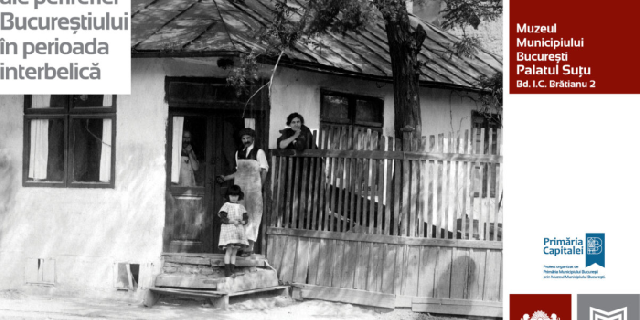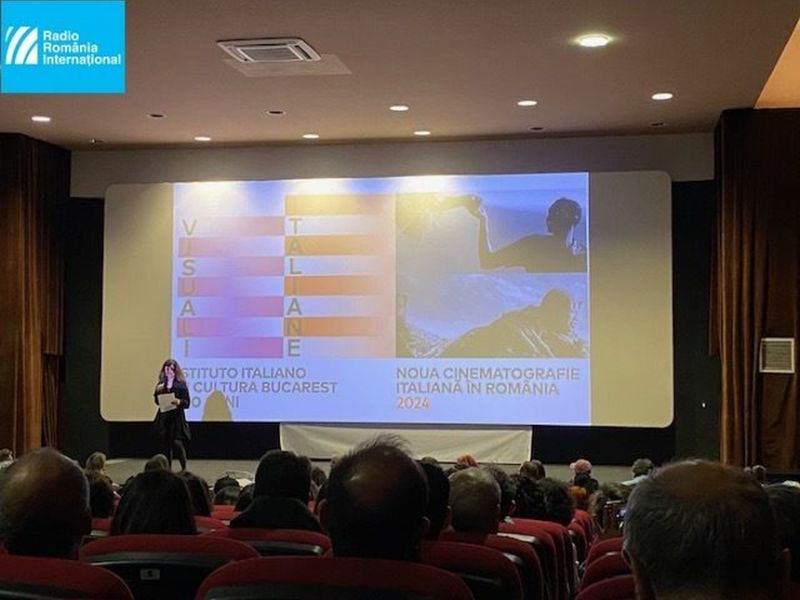Bucharest’s outskirts in the inter-war years
The Bucharest City Museum is playing host to an exhibition about the city's inter-war period.

Ion Puican, 28.10.2023, 14:00
From September until
the middle of November, the Bucharest City Museum is playing host at its
headquarters in the Suțu Palace, in central Bucharest, to an exhibition that
takes visitors back, in the city’s past, entitled Bucharest’s outskirts in the
inter-war years. The inter-war period is defined historically as the 21-year
period between the two world wars, 1918 to 1939. The Romanian capital Bucharest
is the country’s most important industrial and commercial centre as well as its
artistic, cultural and media centre. In 2011, its population was around 2
million inhabitants, not counting the people transiting the city or those
living in the surroundings. Bucharest was first mentioned in historical records
in 1459 and it became the capital of the United Principalities of Wallachia and
Moldavia in 1862. The curator of the exhibition, Cezar Petre Buiumaci, tells us
more about the history of the Romanian capital and other details about the city
in the inter-war period:
Cezar Buiumaci: The exhibition seeks
to showcase the development of the capital city throughout time, the
transformation of the city during its biggest horizontal expansion, which
occurred in the inter-war period. Bucharest at that time was an open, welcoming
city, despite frequent attempts to limit its geographical and demographic
expansion. Bucharest’s becoming the capital of Wallachia, and then of the
United Principalities and of Greater Romania worked as a magnet for people from
other parts, who brought along their own cultural heritage, transforming the
city into an exciting metropolis. Most of the people who arrived here were not
wealthy and would settle in the cheaper areas of the city, on its outskirts, thus
contributing to its geographical expansion.
The collection of the
Bucharest City Museum contains photographic records of the city’s outskirts,
the areas that were about to be expanded, and which disappeared in the second
part of the 20th century. Curator Cezar
Buiumaci tells us what the
exhibition seeks to achieve:
Cezar Buiumaci: I have tried, and hopefully
achieved to showcase the urban outskirts of a developing city. Bucharest’s
dynamic is unique in Romania, its growth has been constant, which is why we are
constantly witnessing changes. Whereas in the 17th Century it was
limited to the University area, in the early 19th Century it reached
today’s Athenaeum building, and by the end of that century it had reached
today’s Victory Square, or rather it followed a circular road on a route
connecting the city’s main railway stations. In order to understand the city’s
geographical growth, we must take a look at statistics, and also at the
following demographics: in 1831 Bucharest had around 60,000 inhabitants, but in
1859 the figure was double. At the end of the 19th Century its
population reached some 230,000, and in 1930, in the middle of the inter-war
period, 640,000 people were living in
Bucharest; in the mid-20th Century its population reached 1 million, and the figure
doubled in the 1980s.
What can
visitors see at the exhibition in Suțu Palace? Here is Cezar Buiumaci:
Cezar Buiumaci: The exhibition presents the outskirts of the
city, following the road mentioned before, but it features what could be seen
at that time beyond this peripheral road, the areas scheduled to be demolished,
which were photographed by the best photographers of the times at the request
of the local administration. There are 60 photographs, depicting various
aspects of life at the outskirts. The public may see what neighbourhood pubs
used to look like, what some of the streets looked like before being paved, or
areas like the so-called Valley of Tears, which are unrecognisable today. They
can see people going bathing and in the same image animals or cars being washed,
ice being taken out of the river during the winter to be used for cooling the
food in the summer, sheep grazing on what is today Plevnei Road, or horses
being shod. These are photographs shown for the first time, commissioned by the
City Hall, and depicting the outskirts. (CM, AMP)





























